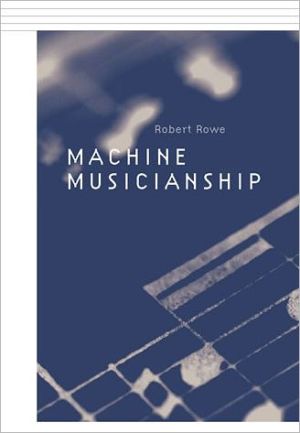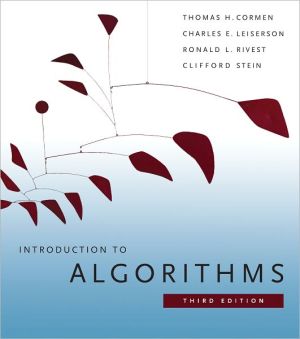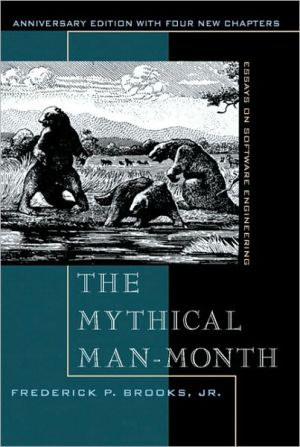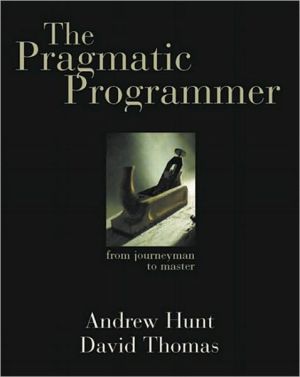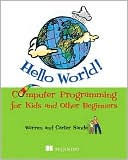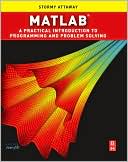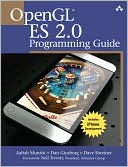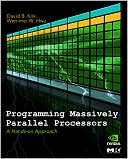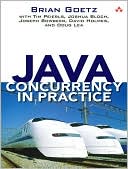Machine Musicianship
Musicians begin formal training by acquiring a body of musical concepts commonly known as musicianship. These concepts underlie the musical skills of listening, performance, and composition. Like humans, computer music programs can benefit from a systematic foundation of musical knowledge. This book explores the technology of implementing musical processes such as segmentation, pattern processing, and interactive improvisation in computer programs. It shows how the resulting applications can...
Search in google:
This book explores the technology of implementing musical processes such as segmentation, pattern processing, and interactive improvisation in computer music programs.
1: Machine Musicianship\ Machine Musicianship is both an exploration of the theoretical foun-dations of analyzing, performing, and composing music with com-puters, and a tutorial in writing software to pursue those goals. The theoretical foundations are derived from the fields of music theory, computer music, music cognition, and artificial intelligence. The intended audience includes practitioners in those fields, as well as composers and interested performers.\ The training of musicians begins by teaching basic musical concepts, a collection of knowledge commonly known as musicianship. These concepts underlie the musical skills of listening, performance, and composition. Computer programs designed to implement any of these skills—that is, to make sense of what is heard, perform music expressively, or compose convincing pieces—can similarly benefit from a musician's fundamental level of musicianship.\ To be sure, there are many worthy computer music programs that have no basic musical knowledge at all. The usual technique is to implement thoroughly that part of musicianship required for the task at hand. Notation programs must know how many beats belong in a bar; sequencers must be able to transpose enharmonically. In this text we will explore how a more systematic foundation of musical knowledge can further extend such programs' range of use as well as improve their communication with human musicians.\ Consider a simple example of this level of functionality: music sequencers can transpose enharmonically, but they cannot execute a command such as "transpose the selected measures to the subdominant." The reason for this limitation is that typical programs have no access to a description of the music in terms of relative harmonic function. Such an extension would be quite straightforward for current sequencers—and there may even be some that do it—though I have not seen any. Even better would be a sequencer that could transpose to the subdominant without the user having to inform the program as to which tonal center is current. That facility is more computationally demanding, but still well within the reach of established algorithms. Examples such as these can be generated at will and doubtless have occurred to anyone who has used music software in any depth. The point is that such programs can become more useful simply by better accommodating the practices of fundamental musicianship.\ This book explores the technology of implementing musical concepts in computer programs and how resulting applications can be used to accomplish tasks ranging from the solution of simple musical problems through live performance of interactive music compositions to the design and implementation of musically responsive installations and web sites. These concepts are programmed using both C.. and Max, a graphic programming environment developed by Miller Puckette and David Zicarelli (Dobrian 1997). Some experience with one or both of these is assumed if readers wish to extend the example programs on their own. The accompanying CD-ROM includes working versions of the examples, as well as source code and a hypertext document showing how the code leads to the programs' musical functionality.\ Machine Musicianship is not intended as a programming tutorial, however. The processes described in these pages constitute a computational approach to music analysis, composition, and perfor-mance that may engage practitioners in those fields whether they are programmers or not. I present the practical examples with programming information in order to help those who wish to write their own, but they can also be used as stand-alone applications by those who do not. It is my hope that interested musicians may even profit from simply reading the text without any use of a computer at all.\ 1.1 The Motivation for Machine Musicianship\ Designing computer programs that will recognize and reason about human musical concepts enables the creation of applications for performance, education, and production that resonate with and reinforce the basic nature of human musicianship. Access to functions such as phrase boundary recognition makes possible operations that simply cannot be accomplished without such capabilities. The realization of norms for the expressive shaping of a phrase by a machine performer, for example, can only be applied once a phrase has been identified as a phrase in the first place. Further, realizing these concepts algorithmically allows us to augment human musicianship with processes and representations that only a computer could implement. A complete record of the program's "listening experience" is immediately available and can be used both to evaluate the algorithm's performance and to direct further analysis.\ Beyond the pedagogical and practical value, I believe that there are compelling musical reasons to emulate human musicianship with computers. Readers may determine for themselves on the basis of extensive existing repertoire whether or not computer music programs have contributed to enduring compositions. Those who dismiss machine musicianship tend to argue that algorithmic composition programs (as one example) are more interesting technologically than they are musically. Another prominent source of dissatisfaction with the enterprise derives from a belief that the development of increasingly musical programs forms a real and growing threat to the livelihood of human musicians.\ The need for better musicianship in music processing is relatively self-evident when contrasted with the aesthetic and ethical questions surrounding the use of automated composition and performance programs. Computers in music have made possible new kinds of creation at the same time that they have caused upheaval in the social and cultural practice of music making. Music programs are cheap, easy to use, and tireless. These attributes make it attractive to use them for many tasks that previously were performed by human musicians. None of these properties, however, have anything to do with the nature of the music being performed. In other words, a large part of the motivation for making music with computers is that computers are less troublesome to employ than people. This situation has had a dramatic effect on the economic prospects for musicians almost as profound as the proliferation of television and sound recording equipment since the 1940s. One can condemn this trend in a hand-wringing Luddite reflex, but the situation is unlikely to change except in the direction of ever greater reliance on machines.\ There are other reasons to use computers in music, however, that have everything to do with the nature of the music performed. My own interest in computer music generally, and interactive music systems in particular, stems from the new compositional domains they open up. Composers have used algorithms in the creation of music for centuries. The speed with which such algorithms can now be executed by digital computers, however, eases their use during the performance itself. Once they are part of a performance, they can change their behavior as a function of the musical context going on around them. For me, this versatility represents the essence of interaction and an intriguing expansion of the craft of composition.\ An equally important motivation for me, however, is the fact that interactive systems require the participation of humans making music to work. If interactive music systems are sufficiently engaging as partners, they may encourage people to make music at whatever level they can. I believe that it is critical to the vitality and viability of music in our culture that significant numbers of people continue (or begin) to engage in active music making, rather than simply absorbing reproduced music bombarding them from loudspeakers on every side.\ Tod Machover stresses a similar point:\ Traditional instruments are hard to play. It takes a long time to [acquire] physical skills which aren't necessarily the essential qualities of making music. It takes years just to get good tone quality on a violin or to play in tune. If we could find a way to allow people to spend the same amount of concentration and effort on listening and thinking and evaluating the difference between things and thinking about how to communicate musical ideas to somebody else, how to make music with somebody else, it would be a great advantage. Not only would the general level of musical creativity go up, but you'd have a much more aware, educated, sensitive, listening, and participatory public. (1999)\ We are at an inflection point in the technology of our culture as the trajectories of television and computer usage cross. Already more computers than television sets are sold each year in the United States. Televisions themselves are due to become digital within a matter of years and households are already becoming wired to receive a much higher bandwidth of information than they currently get from a telephone connection. None of this comes as a revelation anymore and has been thoroughly discussed elsewhere. The interesting question for this discussion is whether people using the new computer/televisions will simply look at these devices or be moved to interact with them. I believe that if computers interact with people in a musically meaningful way, that experience will bolster and extend the musicianship already fostered by traditional forms of music education. Ultimately, the goal must be to enrich and expand human musical culture. Certainly, music will continue to be produced in any case, but without the ferment of an actively engaged audience it will lapse into yet another form of consumerism.\ Philippe Manoury makes this assessment of the relationship between music and its society:\ I am convinced that acertain culture is being lost. Musicis increasingly playing the role of a diversion andthat scares me. I don't have anything against music as adiversion, but I have the impression that our society, faced with numerous problems and no resolutions in sight, considers diversion as an antidote to those problems....The more society stagnates, the more it distributes this antidote of diversion, in which music plays an important role. There is an overconsumption of the music of diversion and people don't see that music can also be the fruit of a reflection and an internal process, something they recognize more easily in literature. (Derrien 1995, 19–20 [my trans.])\ Although it is tempting to believe that one's own approach to music- making will lead to a more engaged society and more fully developed art form, I make no claims of special aesthetic or social virtue inherent to interactive music. However, as computer music is so often accused of leading us to a day when machines will listen only to machines, I feel compelled to observe that many of us are motivated by a much different vision of the computer's potential connec-tion to the community of human musicians....
Acknowledgments1Machine Musicianship12Symbolic Processes173Sub-symbolic Processes934Segments and Patterns1455Compositional Techniques2016Algorithmic Expression and Music Cognition2357Interactive Improvisation2778Interactive Multimedia3179Installations35510Directions377References381Index393
